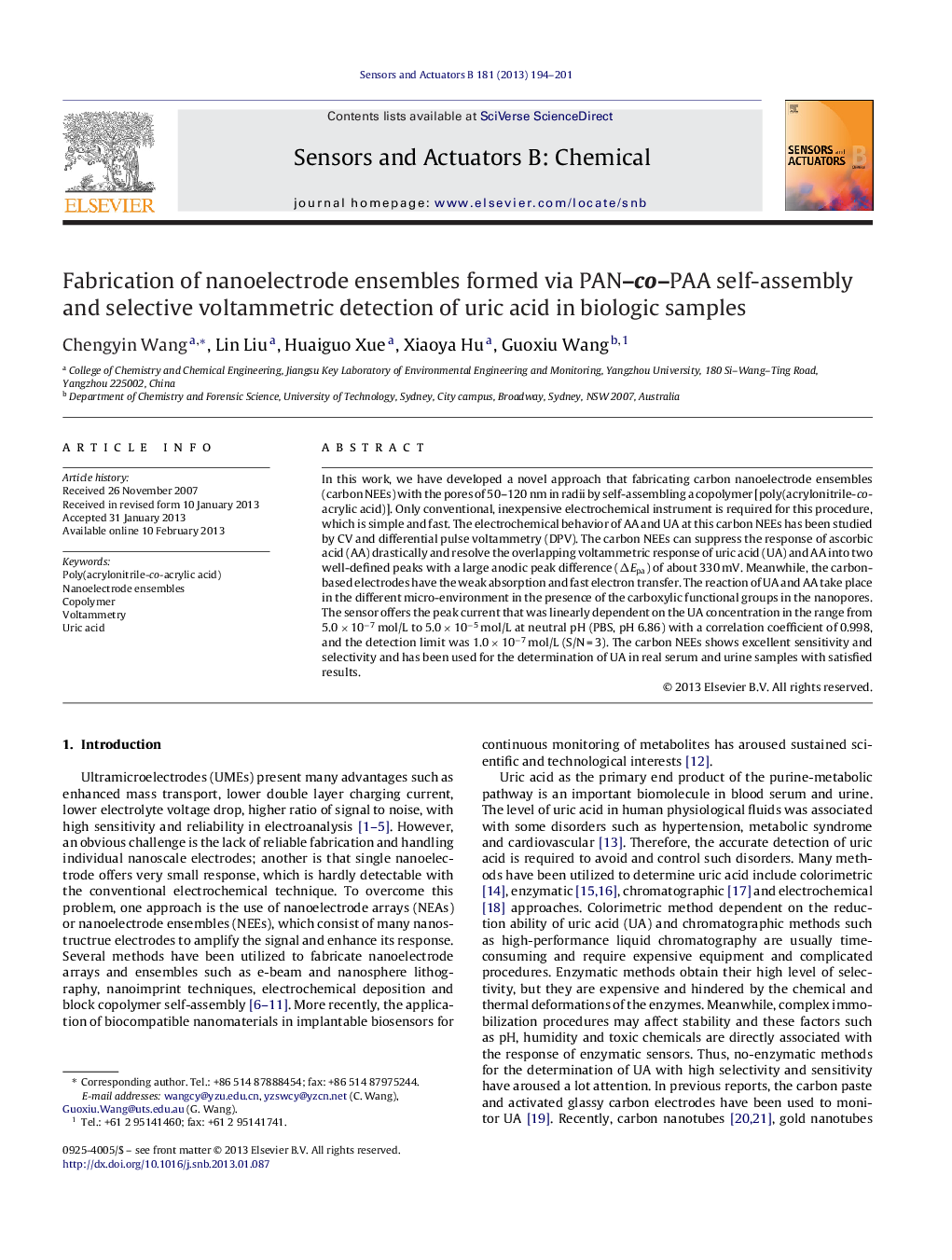| Article ID | Journal | Published Year | Pages | File Type |
|---|---|---|---|---|
| 742130 | Sensors and Actuators B: Chemical | 2013 | 8 Pages |
In this work, we have developed a novel approach that fabricating carbon nanoelectrode ensembles (carbon NEEs) with the pores of 50–120 nm in radii by self-assembling a copolymer [poly(acrylonitrile-co-acrylic acid)]. Only conventional, inexpensive electrochemical instrument is required for this procedure, which is simple and fast. The electrochemical behavior of AA and UA at this carbon NEEs has been studied by CV and differential pulse voltammetry (DPV). The carbon NEEs can suppress the response of ascorbic acid (AA) drastically and resolve the overlapping voltammetric response of uric acid (UA) and AA into two well-defined peaks with a large anodic peak difference (ΔEpa) of about 330 mV. Meanwhile, the carbon-based electrodes have the weak absorption and fast electron transfer. The reaction of UA and AA take place in the different micro-environment in the presence of the carboxylic functional groups in the nanopores. The sensor offers the peak current that was linearly dependent on the UA concentration in the range from 5.0 × 10−7 mol/L to 5.0 × 10−5 mol/L at neutral pH (PBS, pH 6.86) with a correlation coefficient of 0.998, and the detection limit was 1.0 × 10−7 mol/L (S/N = 3). The carbon NEEs shows excellent sensitivity and selectivity and has been used for the determination of UA in real serum and urine samples with satisfied results.
